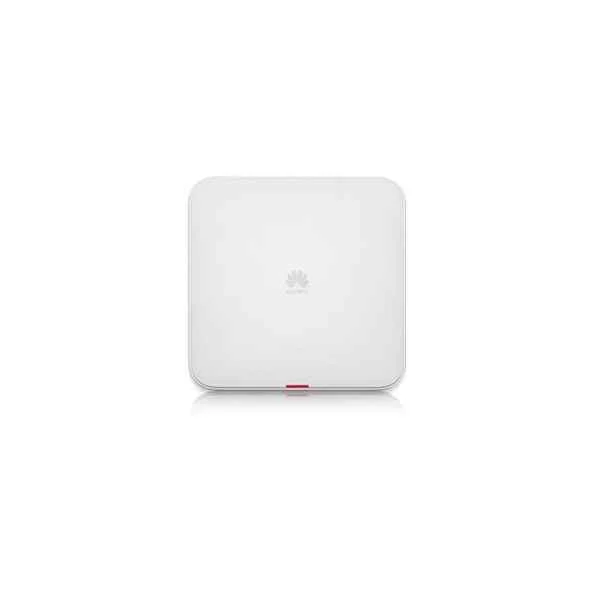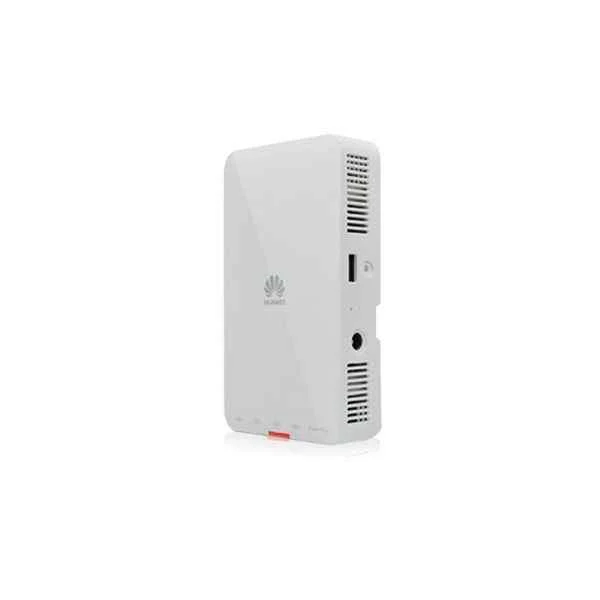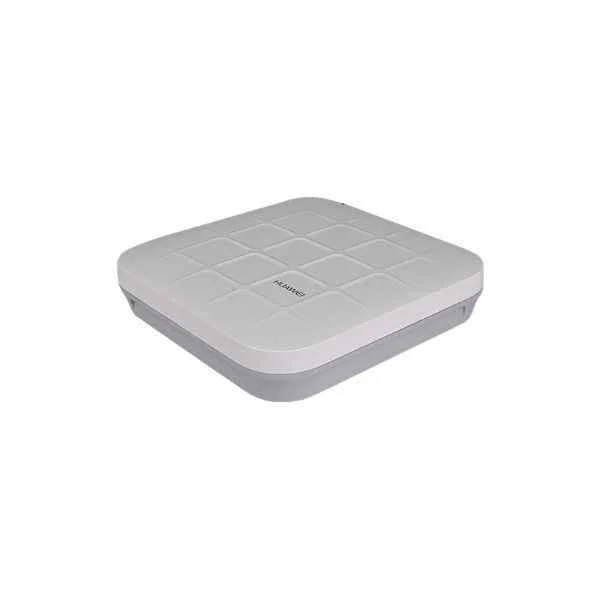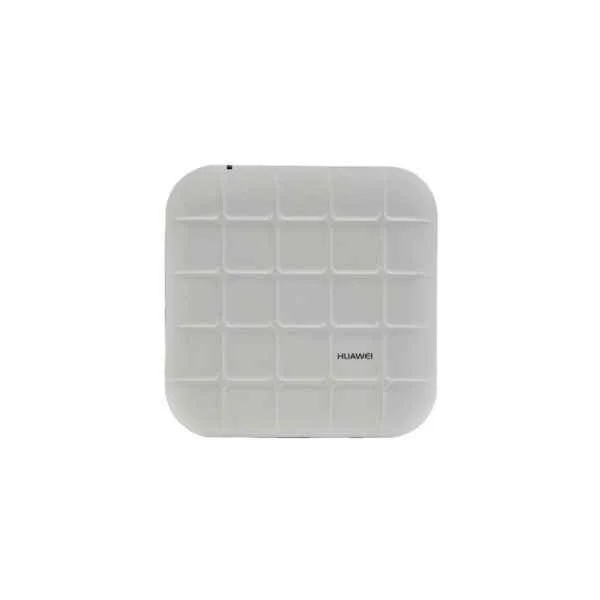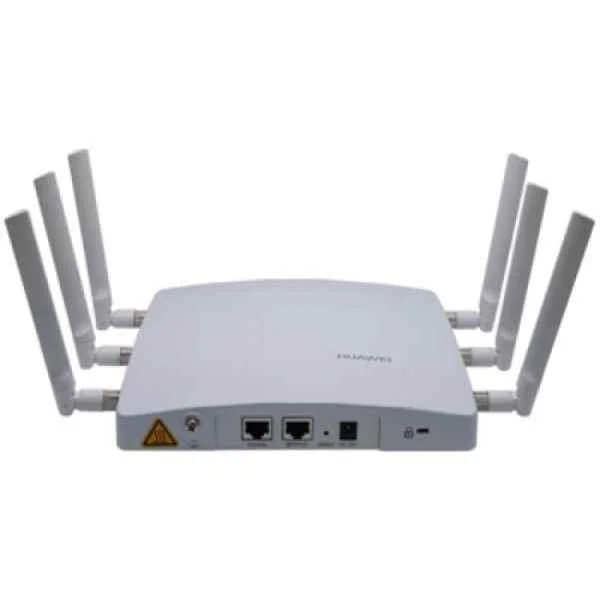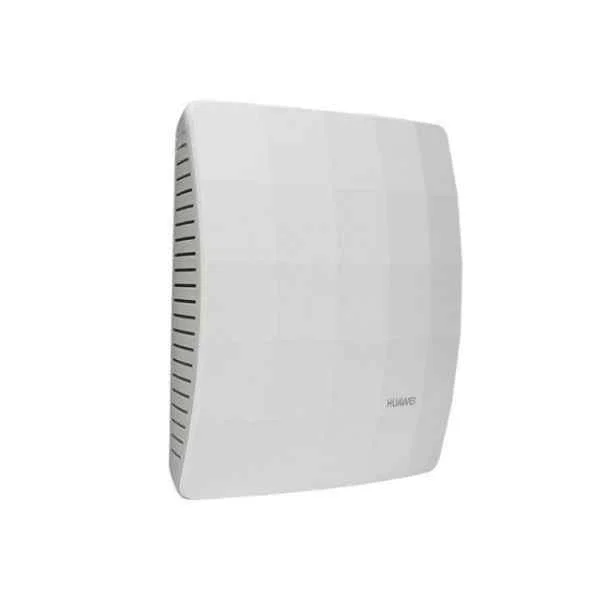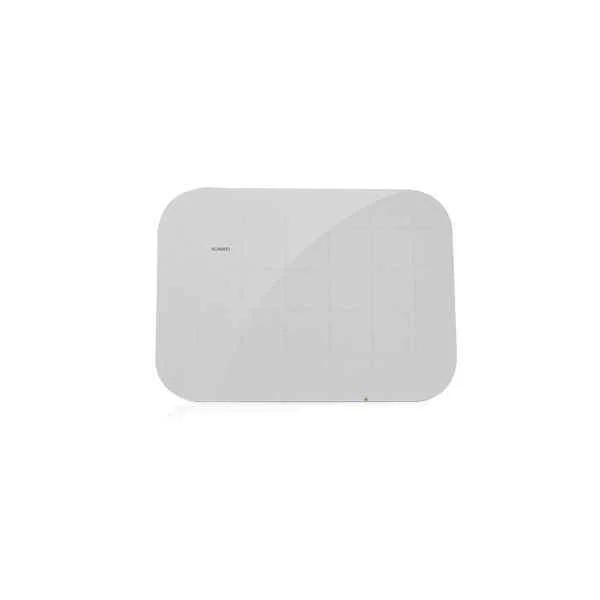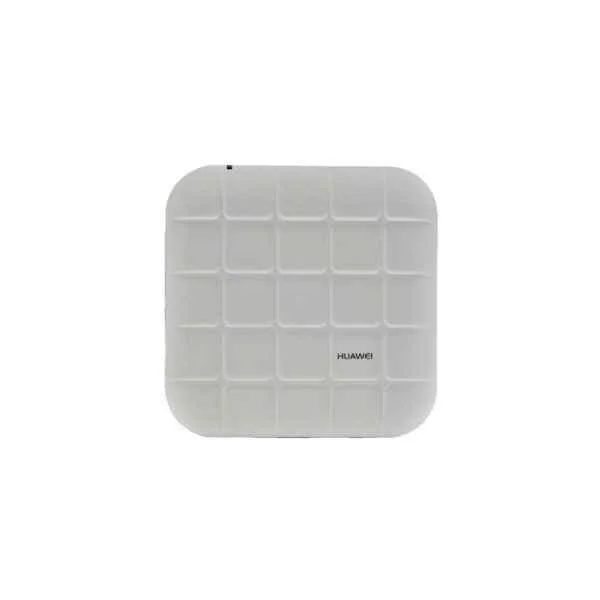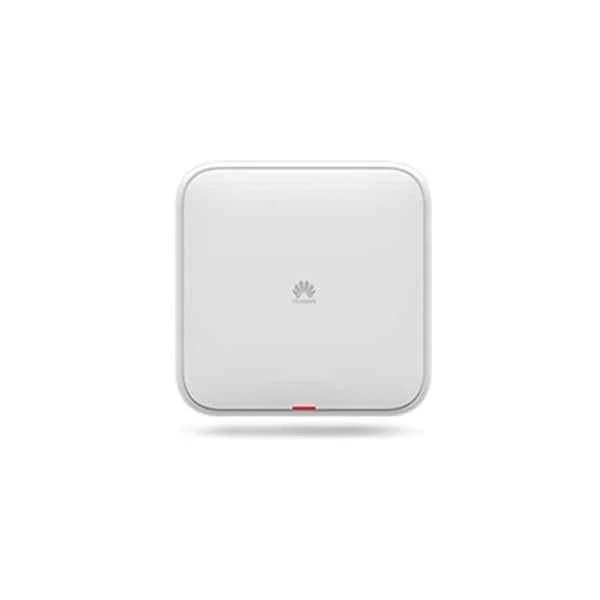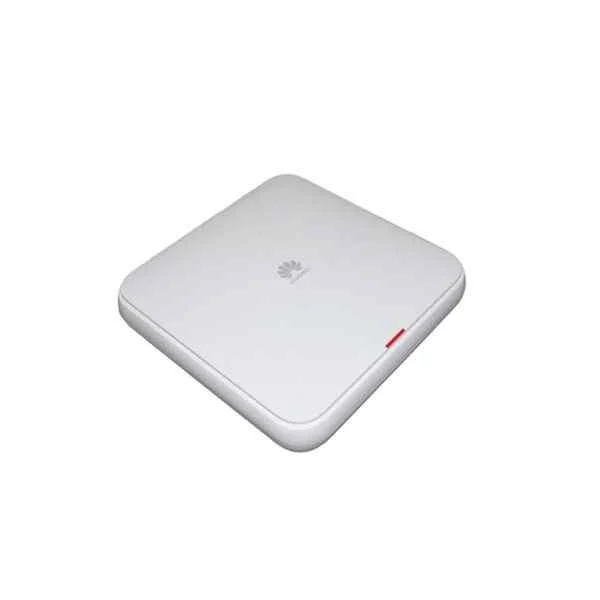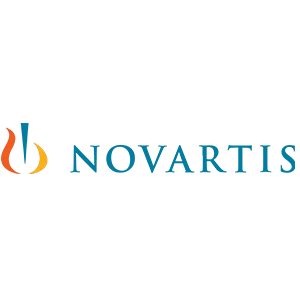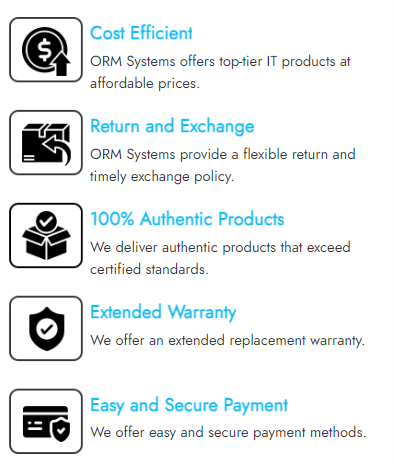Overview Of AP4050DE-M
No Data FoundSpecification Of AP4050DE-M
AP4050DE-M Datasheet
AP4050DE-M Specification
AP4050DE-M Specification |
|
|
Dimensions (H x W x D) |
45 mm x 200 mm x 200 mm |
|
Weight |
0.7 kg |
|
Interface type |
1 x 10/100/1000M self-adaptive Ethernet interface (RJ45) 1 x Management console port (RJ45) |
|
Built-in Bluetooth |
BLE5.0 |
|
LED indicator |
Indicates the power-on, startup, running, alarm, and fault states of the system. |
|
Power input l |
€¢ DC: 12 V ± 10% €¢ PoE power supply: in compliance with IEEE 802.3at |
|
Maximum power consumption
|
16.3 W NOTE The actual maximum power consumption depends on local laws and regulations. |
|
Operating temperature |
€“10°C to +50°C |
|
Storage temperature |
€“40°C to +70°C |
|
Operating humidity |
5% to 95% (non-condensing) |
|
Dustproof and waterproof grade |
IP41 |
|
Altitude |
€“60 m to +5000 m |
|
Atmospheric pressure |
53 kPa to 106 kPa |
|
Antenna type |
Built-in dual-band smart antenna |
|
Antenna gain |
2.4GHz: 4.5dBi 5GHz: 6dBi NOTE €¢ The gains above are the single-antenna peak gains. €¢ The equivalent antenna gain after all 2.4 GHz or 5 GHz antennas are combined is 3dBi in 2.4 GHz or 3dBi in 5 GHz. |
|
Maximum number of SSIDs for each radio |
‰¤ 16 |
|
Maximum number of users
|
‰¤ 512 NOTE The actual number of users varies according to the environment. |
|
Maximum transmit power
|
2.4G: 27 dBm (combined power) 5G: 27 dBm (combined power) NOTE The actual transmit power depends on local laws and regulations. |
|
Power increment |
1 dBm |
|
Maximum number of non-overlapping channels
|
2.4 GHz (2.412 GHz to 2.472 GHz) €¢ 802.11b/g ˆ’ 20 MHz: 3 €¢ 802.11n ˆ’ 20 MHz: 3 ˆ’ 40 MHz: 1 5 GHz (5.18 GHz to 5.825 GHz) €¢ 802.11a ˆ’ 20 MHz: 13 €¢ 802.11n ˆ’ 20 MHz: 13 ˆ’ 40 MHz: 6 €¢ 802.11ac ˆ’ 20 MHz: 13 ˆ’ 40 MHz: 6 ˆ’ 80 MHz: 3 NOTE The table uses the number of non-overlapping channels supported by China as an example. The number of non-overlapping channels varies in different countries. For details, see the Country Codes & Channels Compliance. |
|
Channel rate supported l |
€¢ 802.11b:1ã€2ã€5.5 å’Œ 11Mbit/s €¢ 802.11a/g:6ã€9ã€12ã€18ã€24ã€36ã€48 and 54Mbit/s €¢ 802.11n:6.5~400Mbit/s €¢ 802.11ac wave2:6.5~867Mbit/s |
|
Receiver sensitivity (Typical values) |
€¢ 2.4 GHz 802.11b : -103 dBm @ 1 Mbit/s -95 dBm @ 11 Mbit/s €¢ 2.4 GHz 802.11g : -96 dBm @ 6 Mbit/s -80 dBm @ 54 Mbit/s €¢ 2.4 GHz 802.11n (HT20): 96 dBm @ MCS0 -75 dBm @ MCS15 €¢ 2.4 GHz 802.11n(HT40): -94 dBm @ MCS0 -73 dBm @ MCS15 €¢ 5 GHz 802.11a : -94 dBm @ 6 Mbit/s -79 dBm @ 54 Mbit/s €¢ 5 GHz 802.11n (HT20): -90 dBm @ MCS0 -74 dBm @ MCS15 €¢ 5 GHz 802.11n (HT40): -91 dBm @ MCS0 -72 dBm @ MCS15 €¢ 5 GHz 802.11ac (VHT20): -94 dBm @ MCS0NSS1 -70 dBm @ MCS8NSS2 €¢ 5 GHz 802.11ac (VHT40): -92 dBm @ MCS0NSS1 -67 dBm @ MCS9NSS2 €¢ 5 GHz 802.11ac (VHT80): -89 dBm @ MCS0NSS1 -64 dBm @ MCS9NSS2 |
|
Safety standards |
€¢ UL 60950-1 €¢ CAN/CSA 22.2 No.60950-1 l €¢ IEC 60950-1 l €¢ EN 60950-1 l €¢ GB 4943 |
|
Radio standards |
€¢ ETSI EN 300 328 €¢ ETSI EN 301 893 €¢ China's SRRC document [2002] No. 353 €¢ China's SRRC document [2002] No. 277 €¢ China's SRRC document [2012] No. 620 €¢ FCC Part 15C: 15.247 €¢ FCC Part 15C: 15.407 €¢ RSS-210 €¢ AS/NZS 4268 |
|
EMC standards l |
€¢ EN 301 489-1 l €¢ EN 301 489-17 €¢ ETSI EN 60601-1-2 l €¢ FCC Part 15 €¢ ICES-003 €¢ YD/T 1312.2-2004 €¢ ITU k.20 €¢ GB 9254 €¢ GB 17625.1 €¢ AS/NZS CISPR22 €¢ EN 55022 €¢ EN 55024 €¢ CISPR 22 €¢ CISPR 24 €¢ IEC61000-4-6 l €¢ IEC61000-4-2 |
|
IEEE standards
|
€¢ IEEE 802.11a/b/g €¢ IEEE 802.11n €¢ IEEE 802.11ac €¢ IEEE 802.11h €¢ IEEE 802.11d €¢ IEEE 802.11e €¢ IEEE 802.11k €¢ IEEE 802.11u €¢ IEEE 802.11v €¢ IEEE 802.11w €¢ IEEE 802.11r |
|
Security standards |
€¢ 802.11i, Wi-Fi Protected Access 2(WPA2), WPA €¢ 802.1X €¢ Advanced Encryption Standards(AES),Temporal Key Integrity Protocol(TKIP) €¢ EAP Type(s) |
|
EMF l |
€¢ CENELEC EN 62311 €¢ CENELEC EN 50385 €¢ OET65 €¢ RSS-102 €¢ FCC Part1&2 €¢ FCC KDB series |
|
RoHS l |
Directive 2002/95/EC & 2011/65/EU |
|
Reach l |
Regulation 1907/2006/EC |
|
WEEE |
Directive 2002/96/EC & 2012/19/EU |
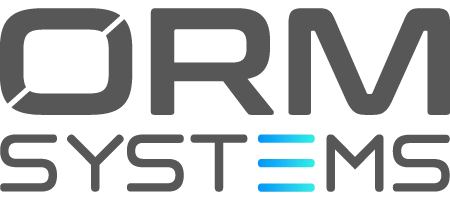

 +1 (281) 747-5957
+1 (281) 747-5957





